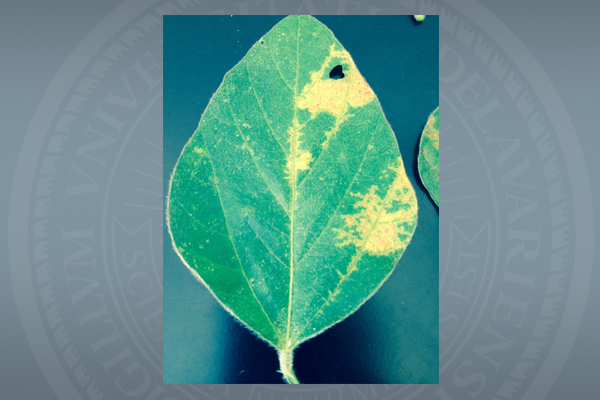
Field crop recommendations
UD Cooperative Extension releases disease management guide for field crops
10:15 a.m., March 16, 2016--University of Delaware Cooperative Extension has released a Disease and Nematode Management in Field Crops guide to give growers and industry professionals recommendations for managing important diseases and nematodes in soybeans, corn, small grains and forage crops.
The guide is now available to growers in Delaware, Maryland, and Virginia and was put together by Nathan Kleczewski, Extension plant pathologist at the University of Delaware, and Hillary Mehl, Extension plant pathologist at Virginia Tech Tidewater Agricultural Research and Extension Centers (AREC).
Campus Stories
From graduates, faculty
Doctoral hooding
While Virginia Tech prints a field crops management guide every year, and the vegetable community in Delaware has multiple guides for disease management, it has been a long time since Delaware has had something for disease management for field crops.
“Hillary and I have been working together on the disease portion to come up with something that’s relevant not just to Virginia but also to Delaware,” said Kleczewski.
Kleczewski said that having a region specific guide is important because recommendations from other regions, such as the Midwest, do not translate to the Mid-Atlantic.
“We have different environmental conditions, diseases, genetic background of pathogens, crop cultivars, and cropping practices,” said Kleczewski.
As an example, he singled out the sudden death syndrome (SDS) disease – a huge issue in the Midwest, sometimes affecting 500-plus-acre fields – that would be a major feature of those guides. In the Mid-Atlantic, however, SDS is only found in small patches and the occurrence is sparse.
Kleczewski said that growers in the Mid-Atlantic should be looking into managing root knot nematode and soybean cyst nematode and not have SDS on the top of their list.
“The same can be said about barley yellow dwarf virus, which is spread by aphids to barley and wheat. Do we see it every now and then? Yes. Do we see it at the scale that it occurs in the deep South or out West, where a significant portion of fields are impacted each year? No. Obviously the way they manage that disease is going to be significantly different from what we do here. For us, barley yellow dwarf management is about scouting, selecting the right varieties, and planting wheat and barley later in the season. This guide is written to inform the growers of the best way to manage threats in our region through integration of several methods,” said Kleczewski.
The guide includes information such as how to properly scout a field and look for diseases, when to look for diseases, and recommendations in terms of what chemicals to use or what cultural practices to use to manage diseases, among other topics.
“All that information is there so the growers or consultants can have something that they can carry in their truck and go to if they have questions,” said Kleczewski. “It’s set up to tell you when to look, what to look for, how to manage within the season, and what you can do to improve disease management season to season.”
The guide also contains information from collaborative plant pathology working groups in corn, soybeans and small grains in which field crop pathologists from across the country meet to discuss the effectiveness of products such as seed treatments and foliar fungicides for disease control.
“That’s really nice because in Delaware, I can only run a couple of trials on corn, wheat, and soybean in a year. The data are generally limited to the one or two diseases that may pop up in that year,” Kleczewski said. “But if you look across all the trials in the United States, we have a great data set each year. Somebody might have a disease that we did not have and we are able to rate products across the board, for a range of diseases. It is also from an unbiased source.”
The guide will be updated every year in order to stay on top of changes in the industry, such as a new disease that might pop up or products that either come on the market or lose registration.
“Varieties change constantly and there are always new products, formulations, etc., so that gets updated all the time,” said Kleczewski.
The guide is available at Extension offices in New Castle, Kent and Sussex counties. Also, Kleczewski hands them out at meetings and is working on getting a field crops page set up on the Extension website.
He also has a Field Crops Disease Management blog where people can get up-to-date information on the latest diseases out in the fields.
“I try to write articles about things that I might see out in the field or important research or management things that a grower/consultant might want to consider. When you sign up for the blog and I write a new article, it sends you an email update. You can also search by subject, keyword, or whatever, and pull up different articles I have written in the past. I would encourage people to look at that, as well,” said Kleczewski.
Article by Adam Thomas








